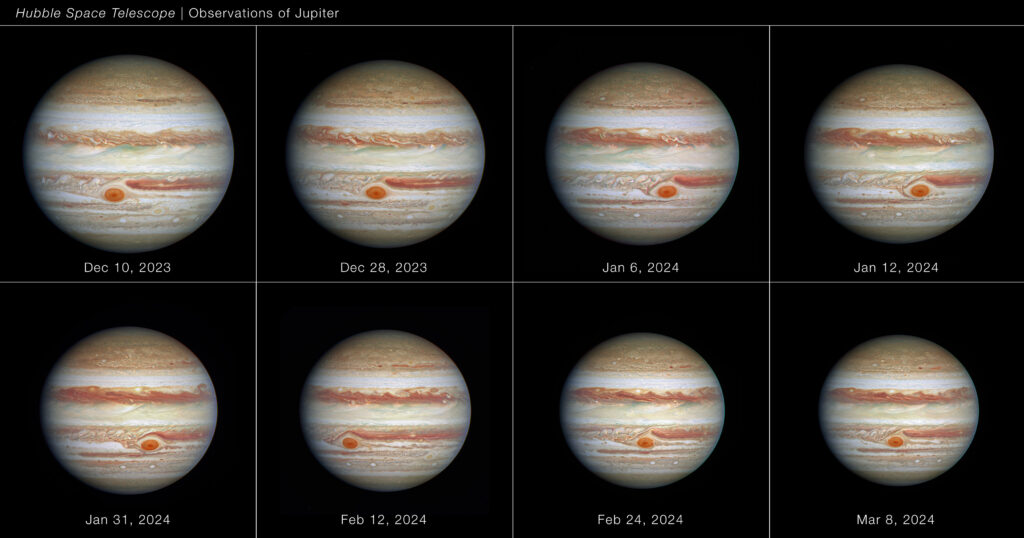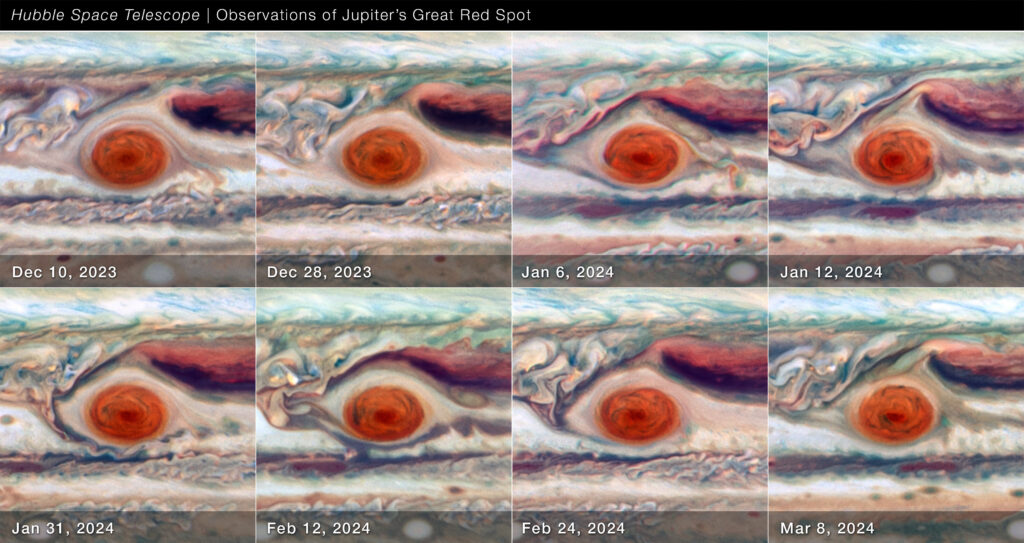The Hubble Space Telescope managed to discover new details about the famous Great Red Spot of Jupiter. It turned out that it is not as stable as previously thought and “wobbles” like a plate with gelatin.

The Great Red Spot (GRS) is a giant anticyclone that has been raging in Jupiter’s atmosphere for at least several centuries. Although the diameter of the GRS has decreased noticeably in recent decades, the storm is still larger than the Earth.
Astronomers have long studied the GRS, trying to understand the mechanism of its formation and amazing longevity. The Hubble telescope has helped them in this process. It made a series of observations of the storm from December 2023 through March 2024, studying it for a total of 90 days. The telescope measured the size, shape, brightness and color of the storm.
The data obtained by Hubble allowed discovering new details about the behavior of the GRS. In particular, it turned out that it fluctuates. Hubble images show that the storm makes elliptical oscillations, moving faster and slower. Scientists figuratively associate its behavior with gelatin. So far, they have no hydrodynamic explanation for this phenomenon.

Hubble was also able to reveal the many daily changes that GRS undergoes. In particular, the storm core becomes brightest when it reaches the largest size in its oscillation cycle. This indicates a smaller absorption of haze in the upper atmosphere.
The researchers have also given a prediction for the future storm. The GRS is “sandwiched” between the jet currents to the north and south of it, making it always in the same latitudes. In comparison, the same Neptune has no such mechanism, so its dark spots can drift around the planet in relative peace. According to the researchers, the GRS will continue to decrease in size in the coming years until it takes on a more round shape. After that, the storm will stabilize in size.
According to Esahubble


